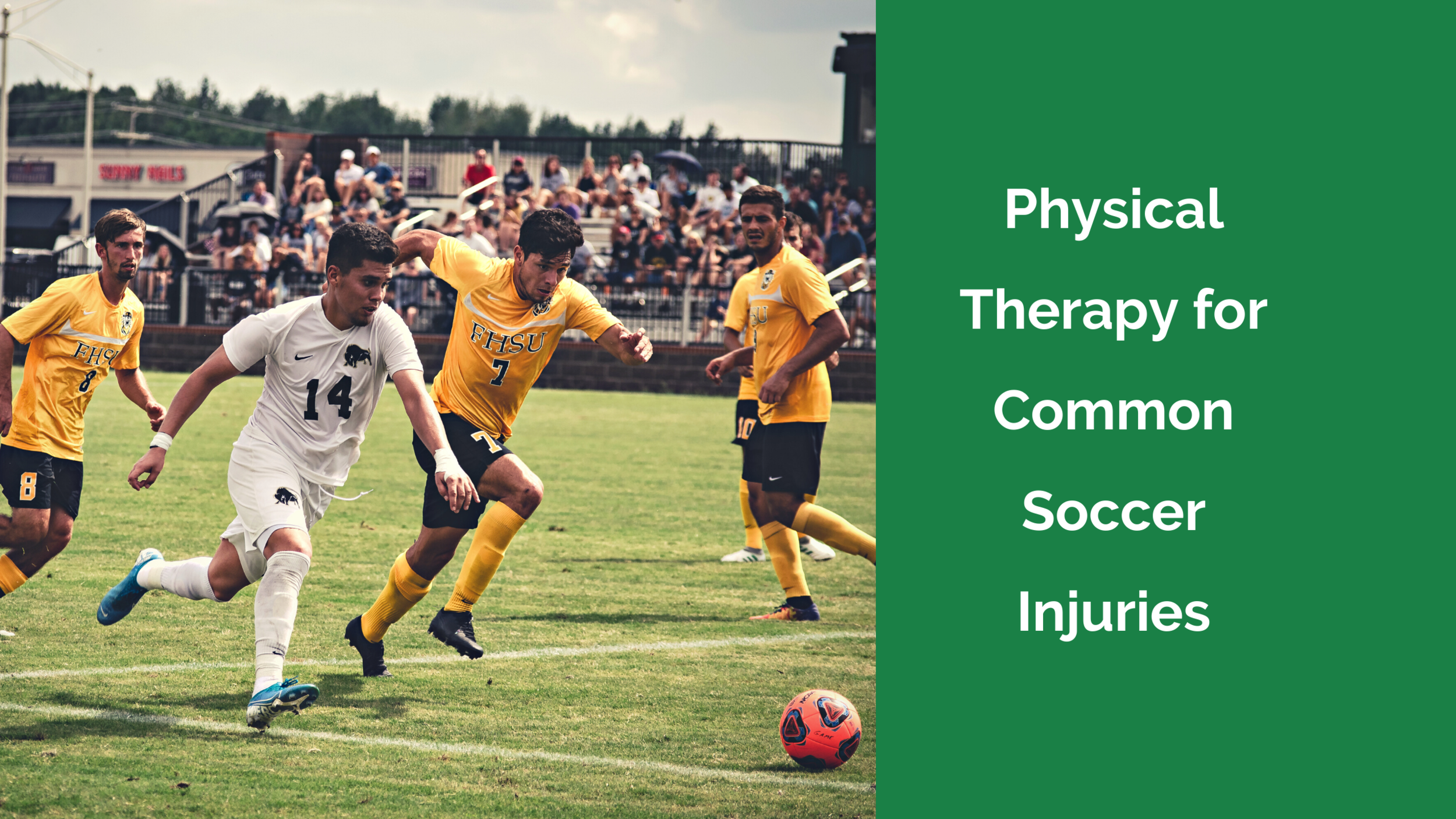Mangiarelli Rehabilitation Physical Therapy Blog
3 Exercises to Address Shin Splints
Mangiarelli Rehabilitation physical therapist Sarah demonstrates three exercises you can do to address shin splint pain. Shin splints are a common athletic injury that develops due to repetitive stress placed on the tibia, causing the surrounding muscles to strain and develop microtears where they connect to the shin bone. Physical therapists can help athletes with shin splints recover pain-free movement, return to sport safely, and prevent future reinjury through a targeted exercise rehabilitation program.
How Physical Therapy Can Help After a Soccer Concussion
A concussion is a mild traumatic brain injury that can result in disrupted neurological function and cause a wide range of physical, cognitive, and behavioral symptoms. The sport of soccer poses a significant risk for concussions and head injuries. During soccer, the head is at risk of contact with the ground, with soccer goalposts, with the ball, and with other players’ heads, elbows, knees, or feet. Physical therapists can effectively manage concussion injuries through evidence-based treatment and a careful, personalized rehabilitation program.
Physical Therapy After a Calf Strain
A calf strain involves injury to or tearing of the muscles in the back of your leg below the knee, primarily the gastrocnemius and soleus muscles. Calf strains are common among athletes who perform stop-and-go movements with quick bursts of speed, such as sprinters, football players, and soccer and tennis players. Physical therapy can help reduce pain, restore muscle strength and flexibility, and increase the speed of recovery through a progressive rehabilitation program to prepare the athlete for a safe return to sport.
Physical Therapy for Ankle Impingement
Ankle impingement can occur when either soft or bony tissues are compressed within the ankle joint at the extreme end of a motion, such as pointing the foot sharply downward. This condition commonly affects gymnasts, dancers, runners, and football, soccer, and volleyball players as these activities require either a repetitive kicking motion or repeated extremes of ankle motion in dorsiflexion or plantarflexion. Physical therapy can reduce ankle impingement pain, heal and strengthen the ankle complex, improve overall balance, and help athletes and dancers return to sport and dance safely.
Treating Shin Splints During Soccer Season with Physical Therapy
Shin splints are a common soccer injury that involves inflammation of the tibia and surrounding muscles, which strain where they connect to the tibia and develop micro-tears, causing pain through the lower leg. Shin splints often occur early in the season during intense conditioning due to a rapid increase in the frequency and duration of exercise that places too much stress on the shin bone and muscles. Physical therapy can help soccer players manage shin splint-related pain, restore function and strength in the lower leg, and help athletes return to sport safely.
Physical Therapy for Snapping Hip Syndrome
Snapping hip syndrome is a common injury among dancers, gymnasts, runners, and soccer players. Snapping hip syndrome occurs when a hip muscle or tendon slides and stretches over the hip bone, then snaps when tension is released during movement, causing pain and tightness in the front, back, or side of the hip. Physical therapy can help to loosen tension in the hip and strengthen and heal the muscles and tendons causing snapping hip syndrome for a safe return to sport and dance.
Hamstring Strengthening Exercises
Hamstring injuries are one of the most common sports injuries, particularly in sports requiring high speed, agility, and explosive power. The hamstring muscles are critical for lower body movement, bending the knee to run and jump and controlling actions such as kicking. Preventing hamstring injury is essential and can be achieved through a targeted strengthening program. On the blog, Mangiarelli Rehabilitation physical therapist Mike demonstrates exercises you can do to strengthen your hamstring muscles.
Physical Therapy for Common Soccer Injuries
Soccer is an incredibly popular sport with over 13 million Americans playing soccer, three million of whom are youth soccer players. Due to the intensity of soccer’s kicking, sprinting, fast changes in direction, and contact and the increase in year-round competition, both traumatic and overuse injuries can occur. Most soccer injuries occur in the lower extremities, particularly to the ankle, knee, and hamstrings. Physical therapists can help soccer players recover from injury safely through a comprehensive rehabilitation program.



















